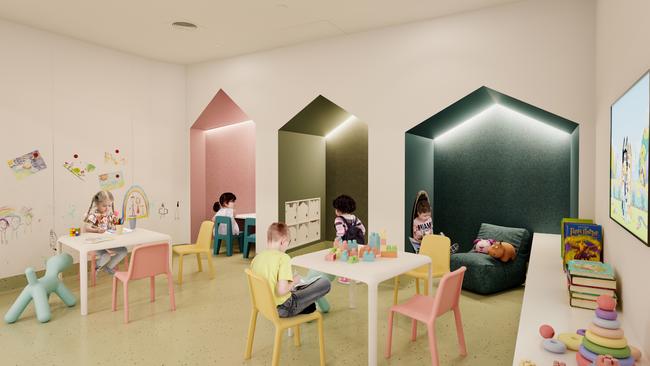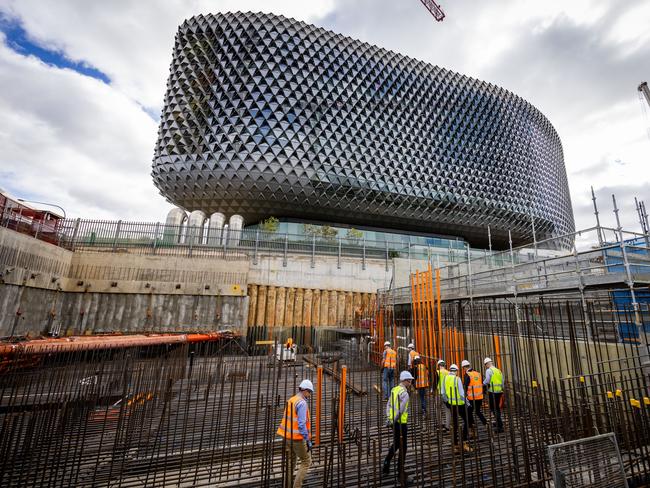Children’s play area at Adelaide proton therapy unit revealed as design team visits site
It looks like a calm, colourful and fun kids’ play area – but it’s been designed in a very careful, specific way. And it’s going to put Adelaide on the world map.
SA News
Don't miss out on the headlines from SA News. Followed categories will be added to My News.
New images show how the nation’s first proton therapy unit being built in Adelaide will be family friendly in an effort to put sick children at ease – because they will be the main patients.
Warm colours, inviting decor, play areas and socialising space are part of the plan to welcome families into a unit housing a beam capable of pulverising otherwise inoperable cancers with minimal damage to surrounding tissue.

The soft and welcoming images come as the international team helping deliver the $500m Australian Bragg Centre housing the proton therapy unit have finally seen the site in person after two years of virtual visits thanks to the pandemic. And they liked what they saw.
This included the massive bunker being built next to the South Australian Health and Medical Research Institute (SAHMRI) headquarters to house the unit.
Commercial & General is working with specialist consultants on the project in Adelaide’s BioMed City precinct.
These include Protom International delivering the proton therapy technology, global medical architecture firm Stantec, construction experts L & K Particle Therapy and engineering specialists BR+A Consulting Engineers.
Covid suddenly meant project management was juggled with thousands of hours of virtual meetings and long-distance conversations across time zones.

After finally getting together to tour the site, the experts were glowing in their praise, including L & K Particle Therapy’s Kevin Kriebel who has worked on 13 proton therapy units.
“These are extremely complex projects with very fine tolerances, we are literally dealing with things down to the sub-millimetre,” he said.
“In my 36 years in major construction and the past 12 in particle construction, this is by far the best organised construction I’ve seen – that’s a credit to the local team.”
Protom International’s vice president of engineering Dan Raymond said the project had many “firsts” including Australian regulatory approvals.
“The result here in Adelaide will be right up there on the global scale,” he said.
Allen Whitaker of international healthcare architecture firm Stantec said it had been a challenge to work remotely.
“We have a number of proton centres under our belt around the world, but the stature of this one is quite high,” he said. “Being the first in Australia makes it special, and the team that was brought together – particularly in the face of Covid – created a spirit of can-do.”

The project will support 1000 jobs and generate an estimated $1bn in economic activity during construction and is due for completion in late 2023 and is expected to treat its first patients around 18 months later.
The project is funded through a public-private partnership including SAHMRI, Commercial & General and the federal and state governments.
Commercial & General’s Courtney Procter said two years of not being able to work face-to-face had increased communication and collaboration.
“We’ve become so adept at using technology to connect, discuss and problem solve that it’s become second nature,” she said.



